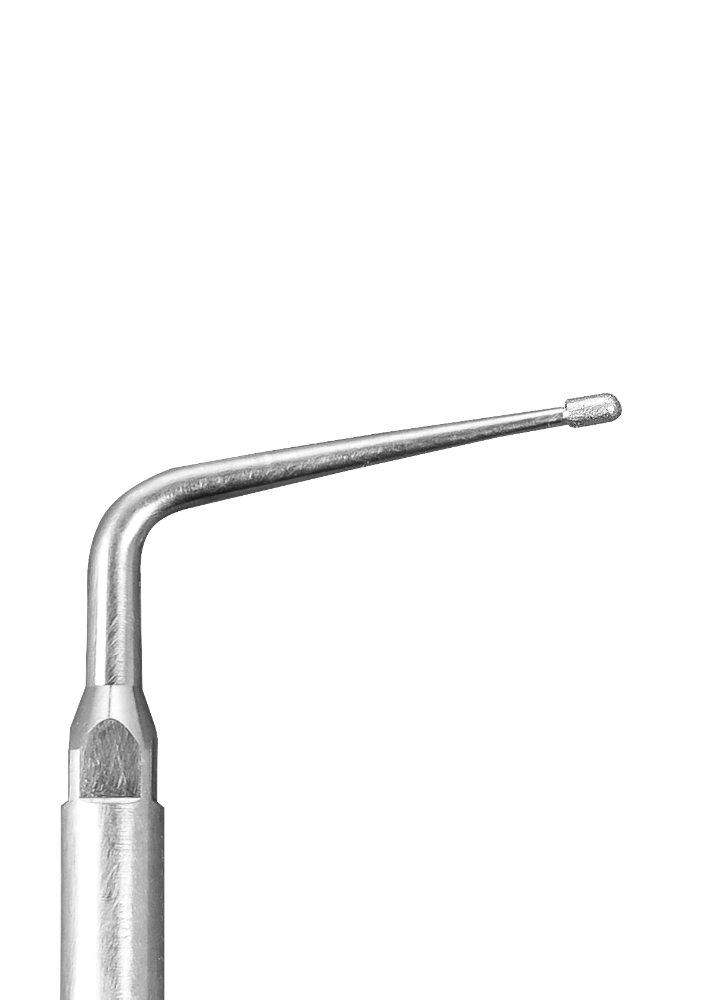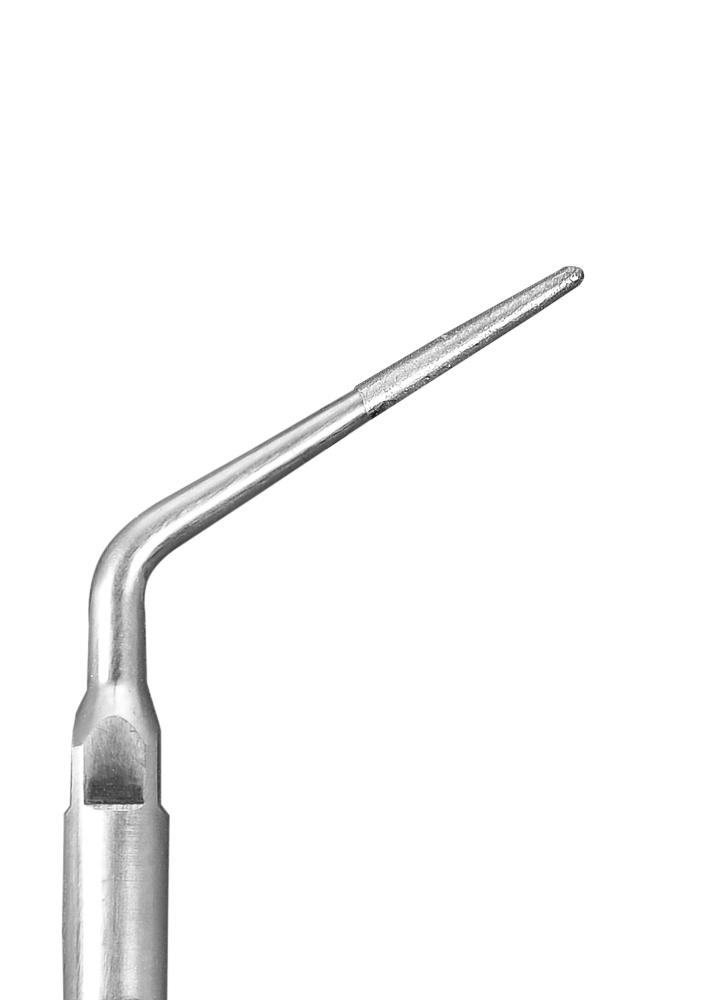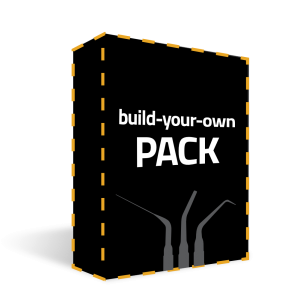Removing Pulp Stones
![]()
Faster and safer than a high speed turbine.
Another challenge in Endodontics is the removal of pulp stones, as they block the access to the root canals. The best treatment for this condition is the combination of magnification and ultrasonics. The improved visualization and the conservative wear of the ultrasonic tip result in fewer iatrogenic errors.
Knowing where to access is only the first step.
1st Law of canal location
The root canal access is always located in the wall-floor junction.
2nd law of canal location
The root canal access is always located in a vertex.
Step-by-Step Calcified Canal Location
1. After achieving access to the pulp chamber using a high speed turbine, place the ultrasonic tip in direct contact with the pulp calcification.
2. Initiate the removal using straight and continuous movements over the calcification (dry procedure – do not irrigate).
3. Ultrasonic inserts are meant to be used for short periods of time, to avoid overheating. To wash and remove dentin and pulp remains, use a syringe containing sodium hypochlorite, followed by suction and drying of the pulp chamber.
Repeat steps 2 and 3 until the whole calcification is eliminated
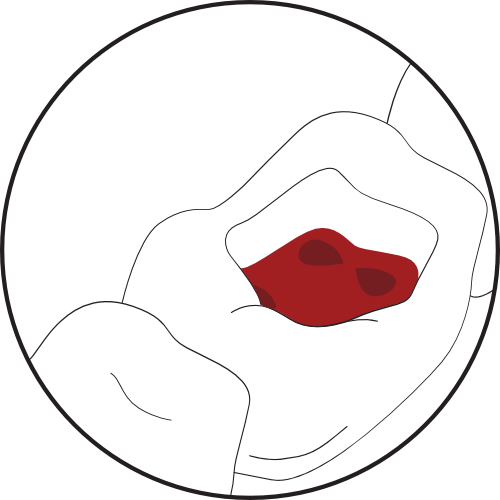
1. Pulp chamber with pulp stones obstructing the access to the canals.

2. Activate the ultrasonic insert in contact with pulp stones.
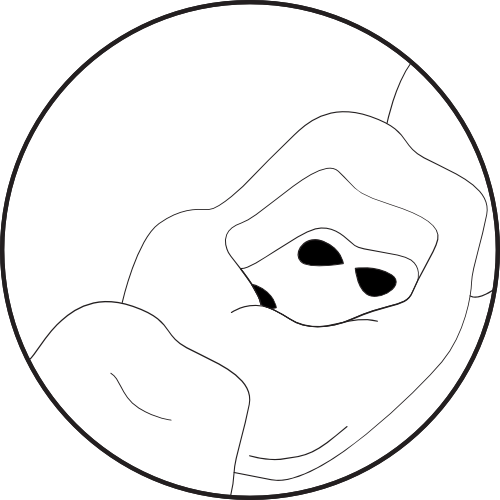
3. Unblocked access to canals after removal procedure.

Pulp chamber with stones blocking the access to the canals
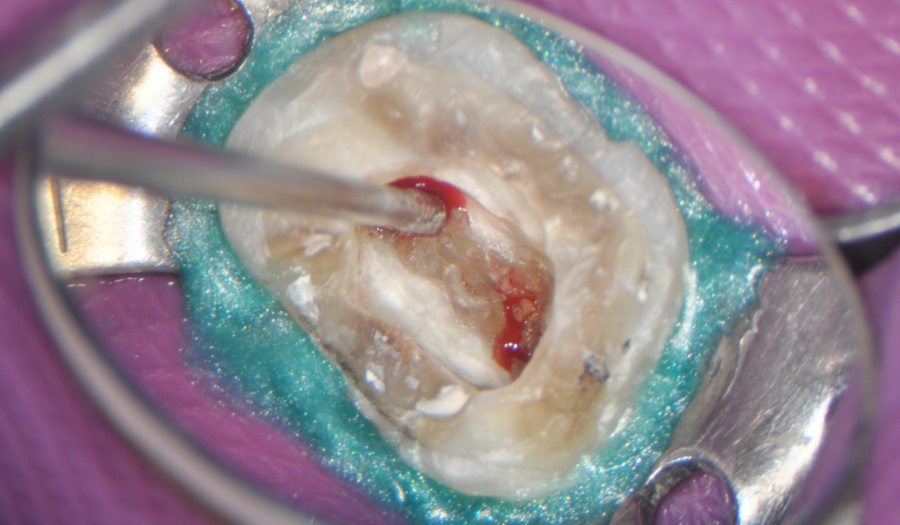
E6D tip in action to remove pulp stones
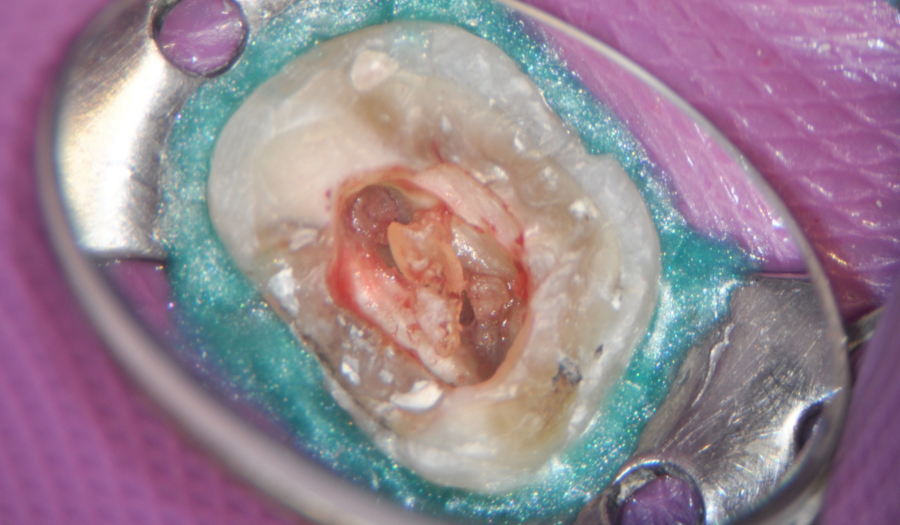
Loose stones after procedure with the E6D ultrasonic tip
Check the color difference between the pulp chamber walls and floor. The correct identification of the wall-floor junction is the most important detail during the access phase!


